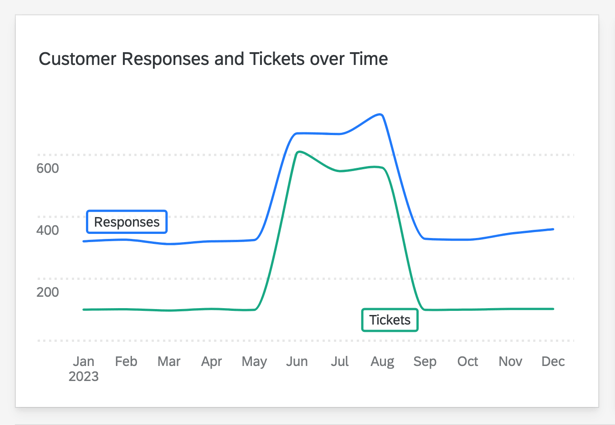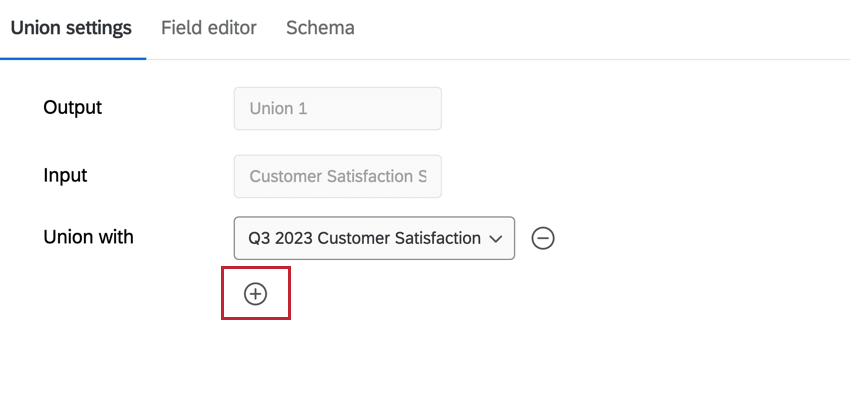Combining Ticket & Survey Data in Dashboards (CX)
About Combining Ticket & Survey Data in Dashboards (CX)
Many customer experience programs use both survey and ticketing data to create a comprehensive “close the loop” program. Surveys provide a means to collect customer feedback, while ticketing systems notify your representatives of the most critical feedback, allowing representatives to then reach out to customers and resolve issues as they arise. This process can build trust and close experience gaps, but to keep it running smoothly, it’s important to have the right reports and visualizations in place.
With the data mapper, ticket and dashboard data had to be separated onto different pages. However, now, with the data modeler, this data can be combined into one page, allowing for more dynamic dashboard visualizations.
Setting Up Ticketing in Surveys
In order for ticketing and survey results to appear in the same dashboard, your tickets should be connected to a survey. You cannot use tickets created in scheduled workflows or workflows started by non-survey events.
- Create a survey. This is where customers fill out information that then creates a ticket for your team.
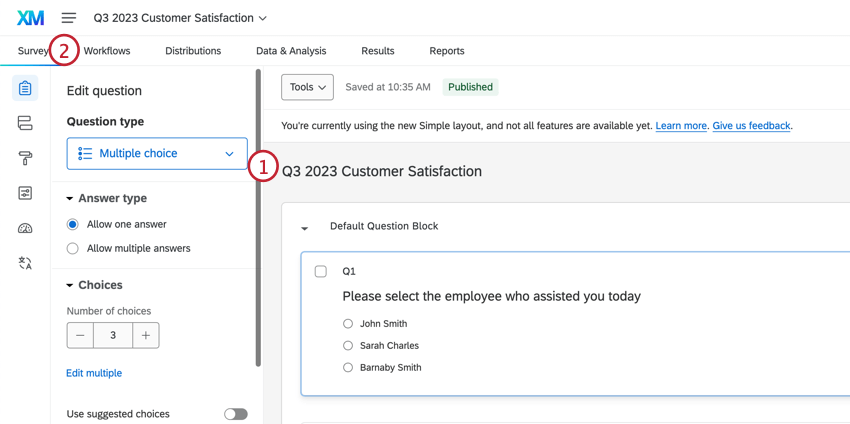 Qtip: For guidance on the best information to include in your survey, see our Closing the Loop support page.
Qtip: For guidance on the best information to include in your survey, see our Closing the Loop support page. - Go to the Workflows tab.
- Create a new workflow based on a survey response event.
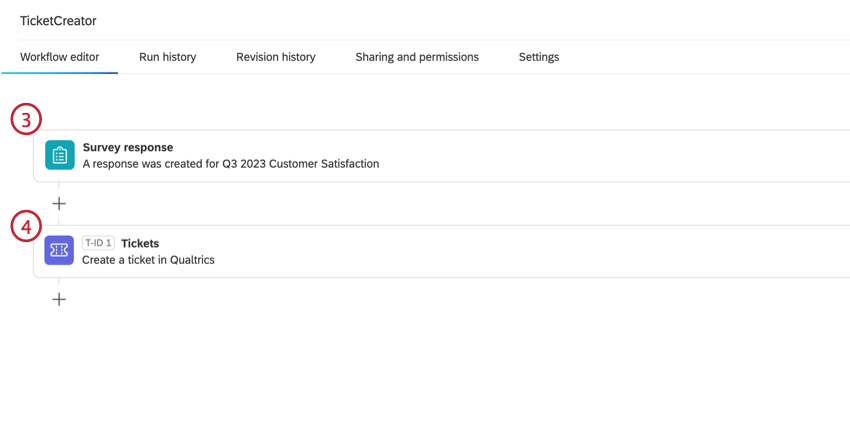 Qtip: Conditions can narrow down when a ticket is created. For example, you may only want to create a ticket if a negative response is reported.
Qtip: Conditions can narrow down when a ticket is created. For example, you may only want to create a ticket if a negative response is reported. - Add a ticket task to your workflow.
- Publish and distribute your survey.
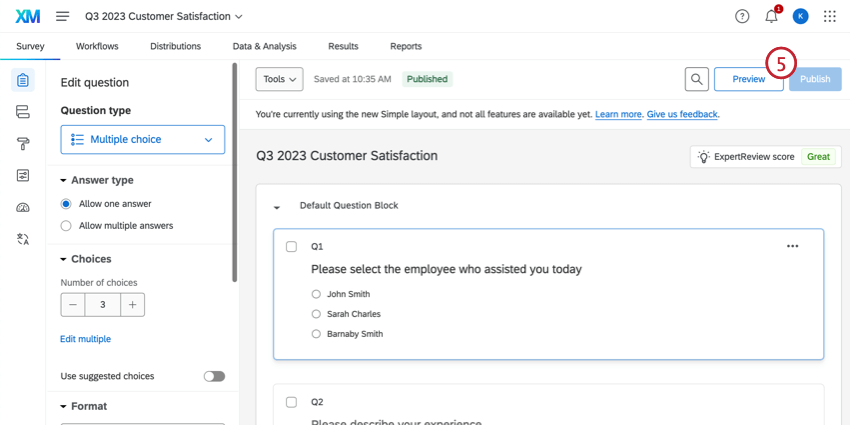
As responses are collected in this survey, tickets will be created and stored in the follow up page.
Creating a Data Model
- Create a dataset.
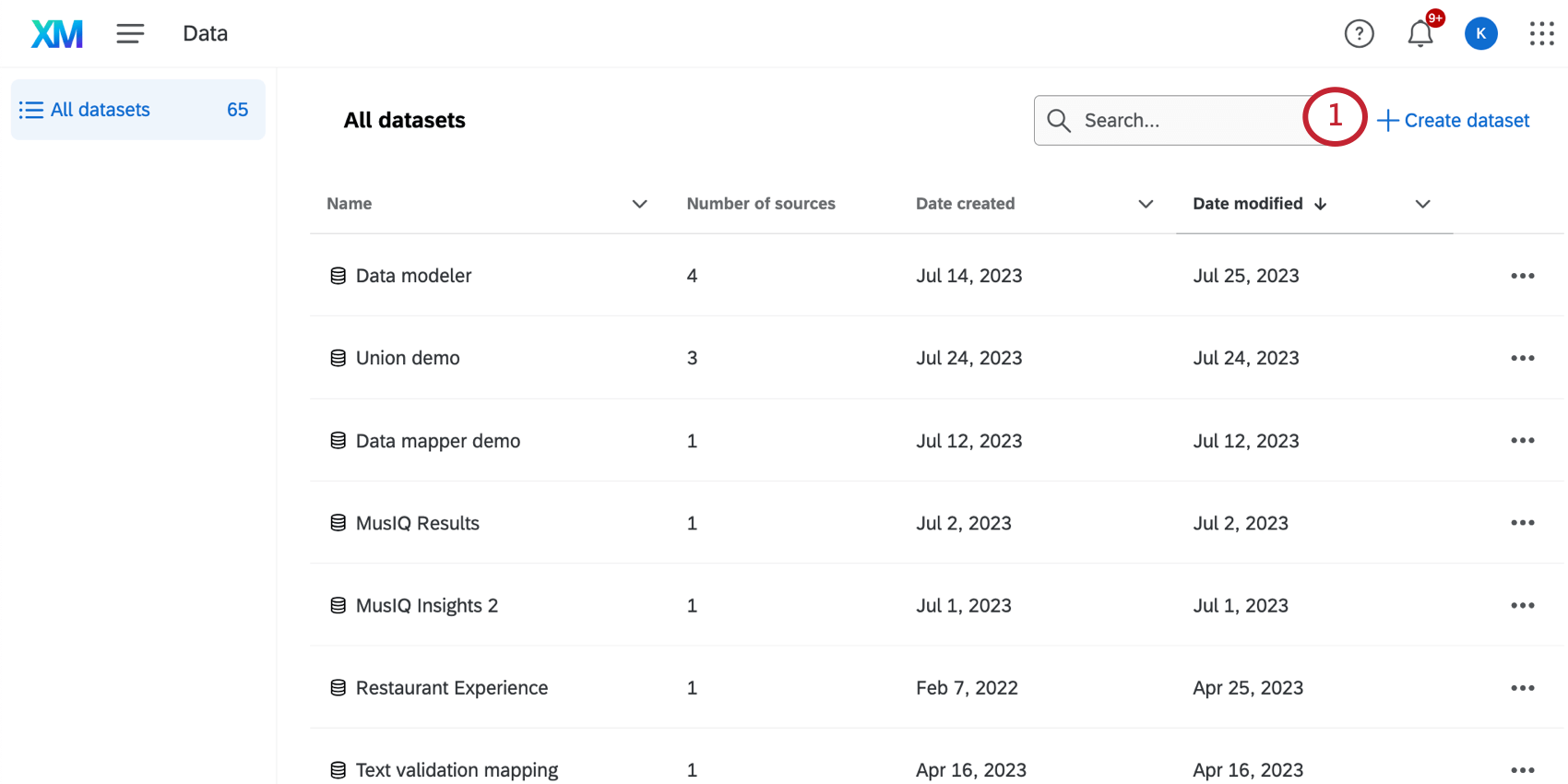
- Set the Type to data modeler.
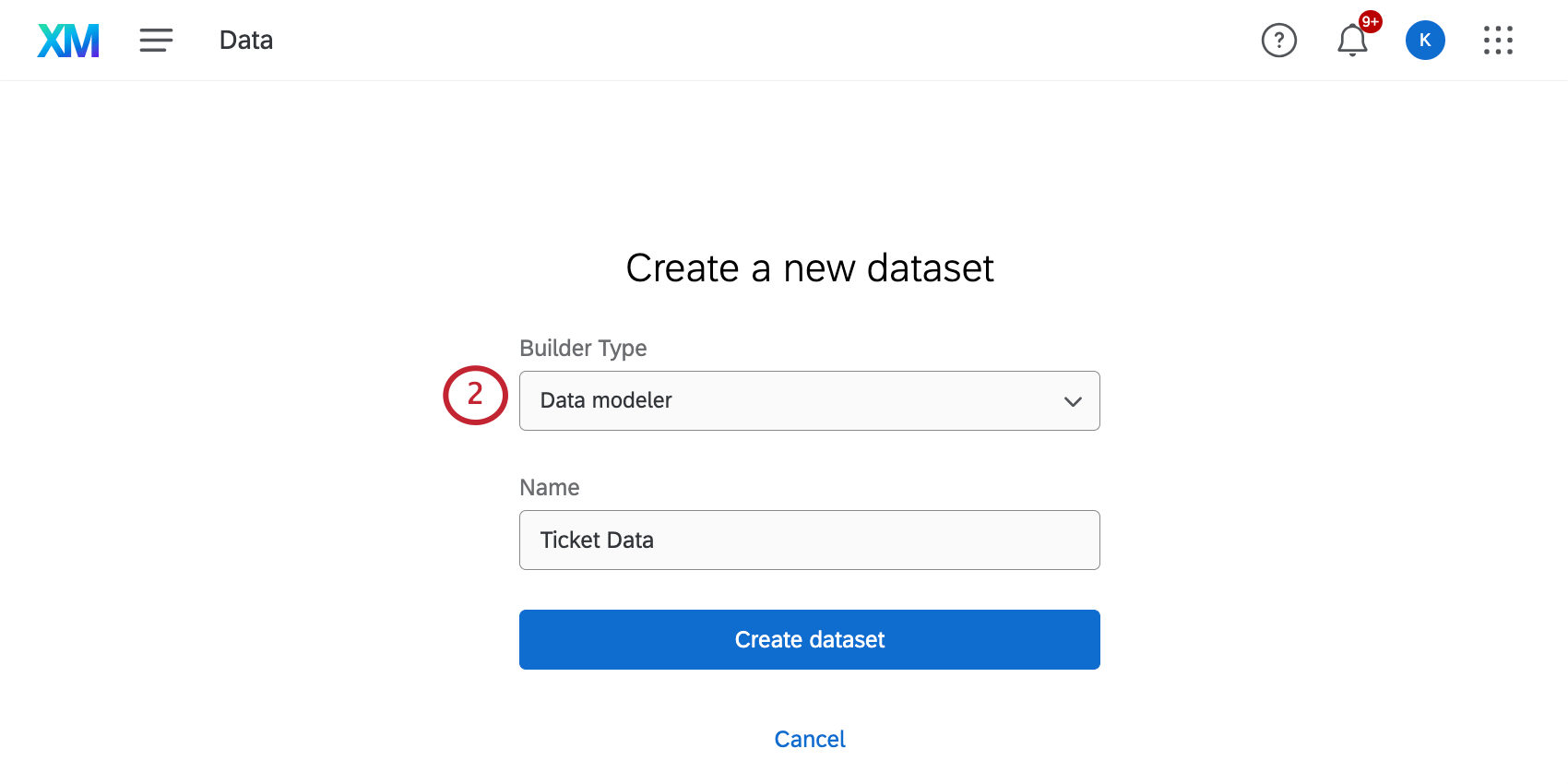
- Click Add source.
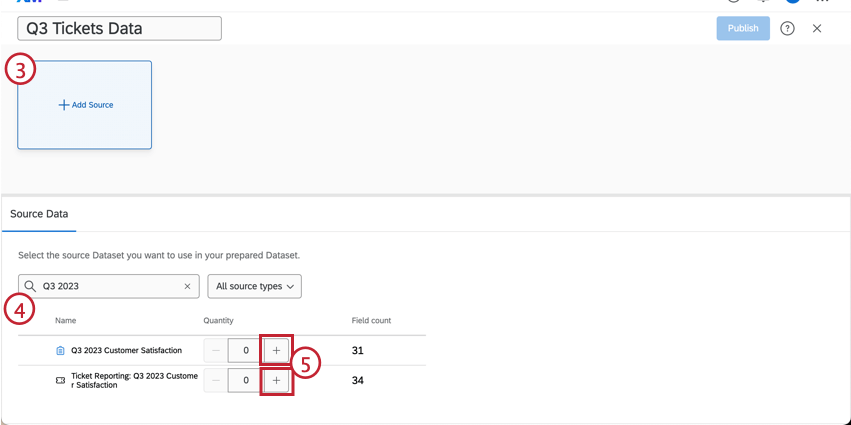
- Find your ticket intake survey and your ticket data. You may need to search for the title of your intake survey.
Qtip: Ticket data sources are data from ticket workflows set up in surveys. These surveys must be ones you have access to before they appear. Ticket data is formatted Ticket Reporting: [Survey Name]. Make sure to select the dataset that matches the survey name of the survey data source you’re using. Data from tickets is not available for use in the data modeler until set up. See Migrating Ticket Reporting Data to the Data Modeler for more information.
- Click the plus sign ( + ) next to your intake survey and ticket data to add it to the data modeler.
- Click the plus sign ( + ) next to your datasets above then select Join.
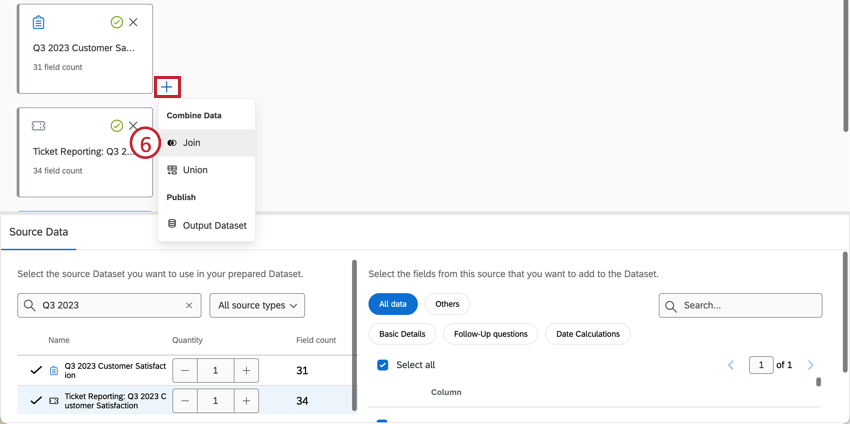
- In the Right of the Input row, select your ticketing data from the drop down.
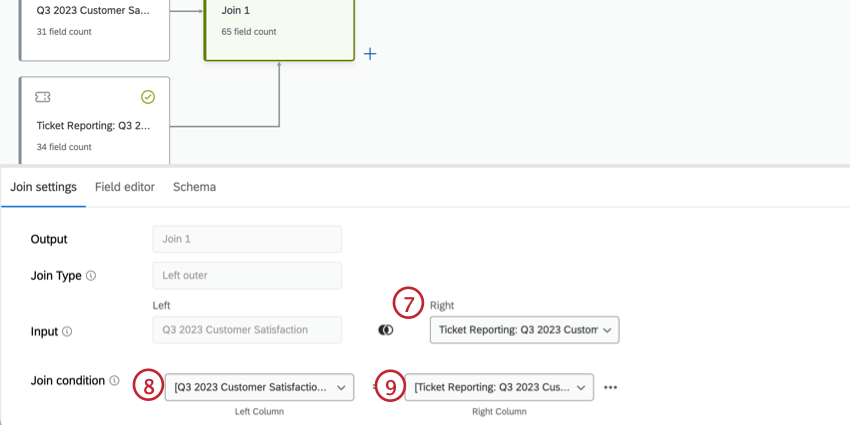
- In the Left Column of the Join condition row, select your intake survey record id.
Qtip: Record ids are formatted [Survey Name]_recordId and [Ticket Reporting: Survey Name]_ticketResponseId
- In the Right Column of the Join condition row, select your ticket response id.
- Click the plus sign ( + ) next to the Join and select Output Dataset.
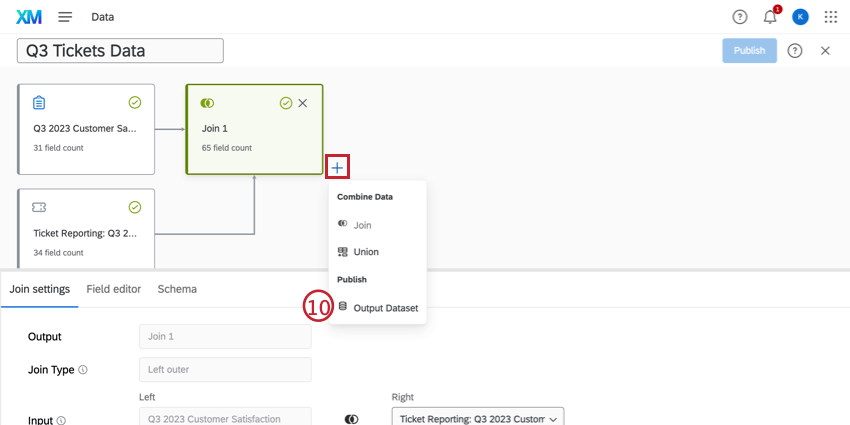
- Publish your data model.
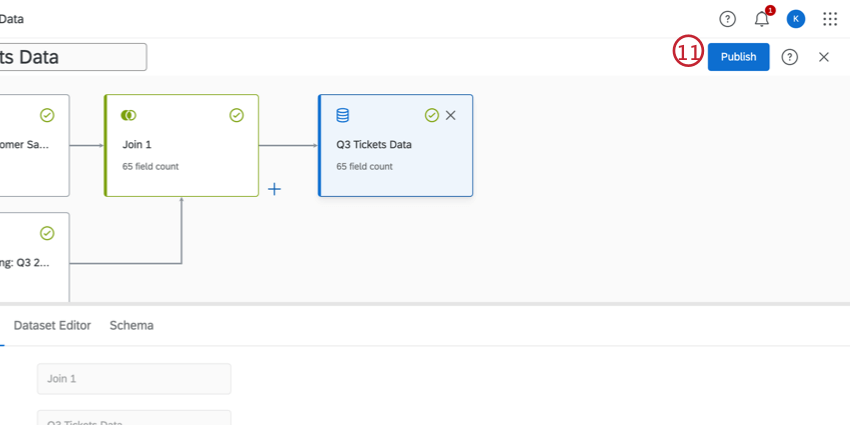
Creating a Dashboard
After creating a data model, the survey and ticketing data is ready to be mapped to a new dashboard.
- Create a new dashboard.
- Click Add data set.
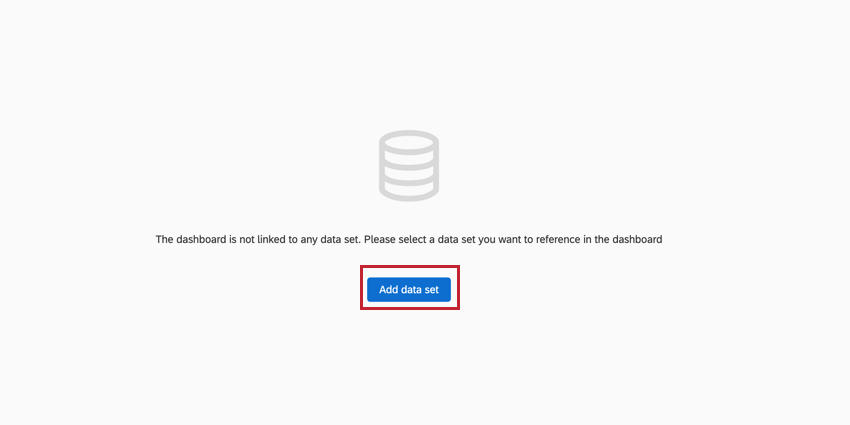
- Select the dataset you created in the previous section.
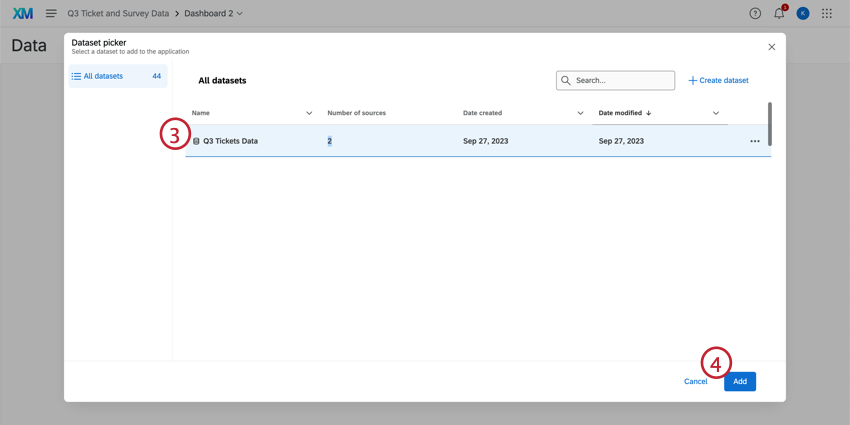
- Click Add.
Once the dataset is added to the dashboard, you will see both ticketing and survey data fields while building your widgets.
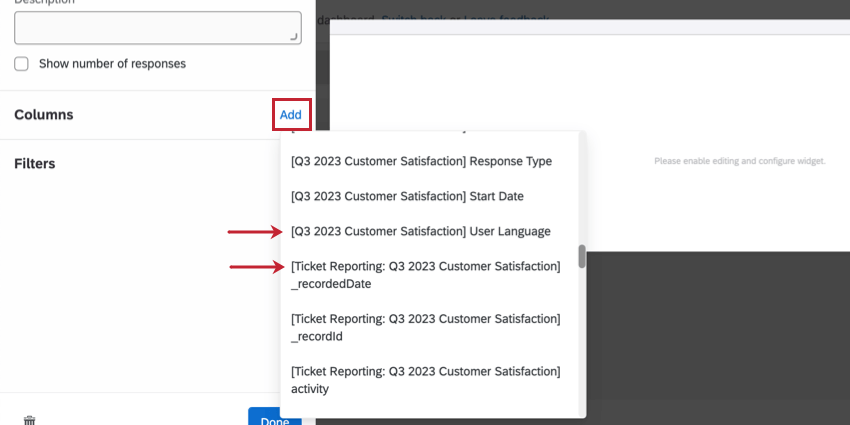
Example Widgets
Below are a few example widgets to help understand how the feature can be used:
- A line chart widget showing the number of survey responses and the number of tickets generated over time.
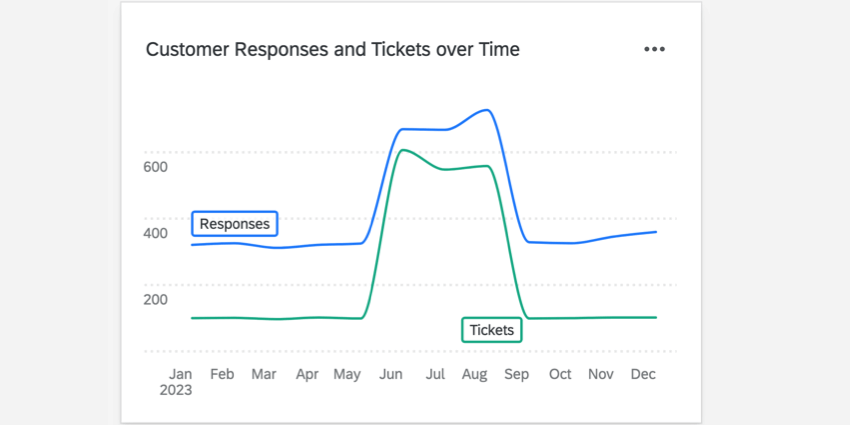
- A line chart widget showing the average ticket resolution time over time.
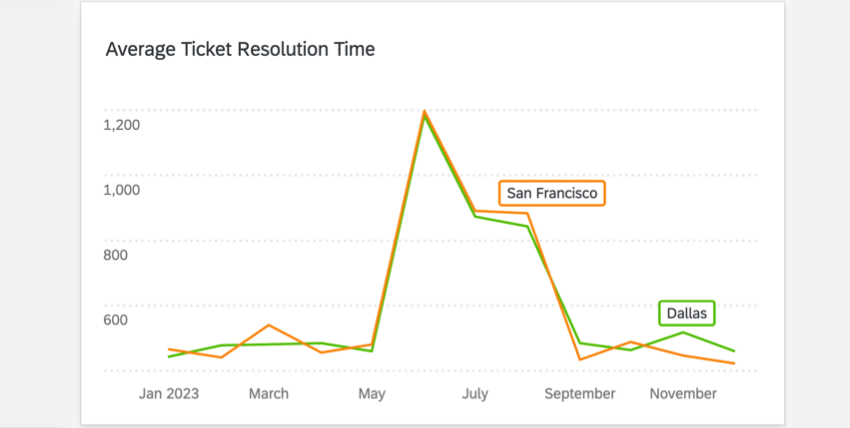
Editing the Dashboard’s Data Source
When building your dashboard, it may be necessary to edit your data source in order to enable the kinds of widgets you want to customize your dashboard with. For more information, see Field Types and Widget Compatibility (CX).
- Open the dashboard settings.
- Go to the Dashboard data tab.
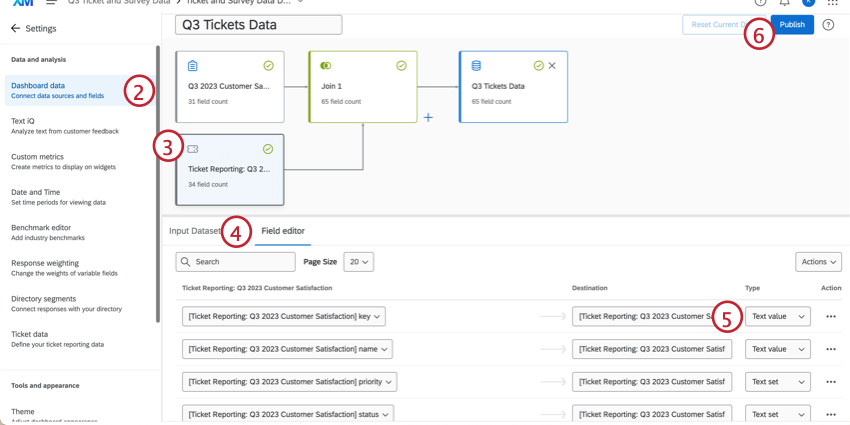
- Click the dataset you would like to edit.
- Select the Field editor tab.
- Change the field type using the drop downs in the Type column.
- Click Publish when finished.
Migrating Ticket Reporting Data to the Data Modeler
Ticket Reporting Datasets are built using ticket data from all projects combined, whereas the data modeler separates each ticket dataset by project. Ticket reporting datasets cannot be imported into the data modeler, but they can be replicated by combining ticket datasets from different projects in the data modeler.
- Identify the number of ticket source datasets and fields used currently in the Ticket Reporting Datasets for a dashboard.
- Navigate to the Data modeler.
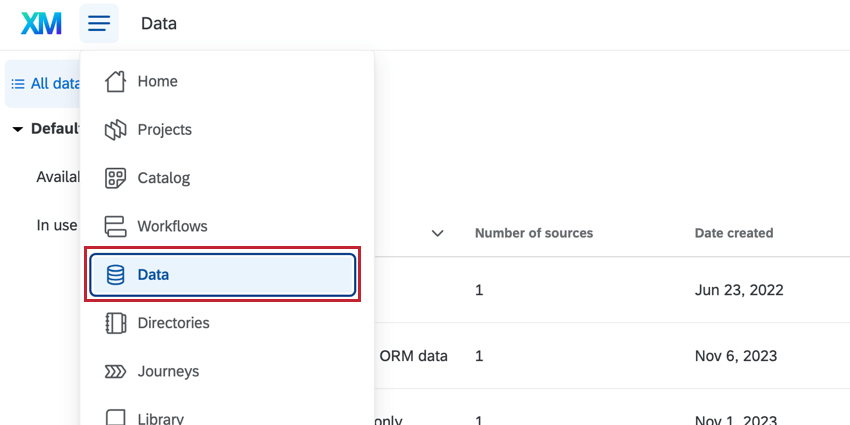
- Click Create a dataset.
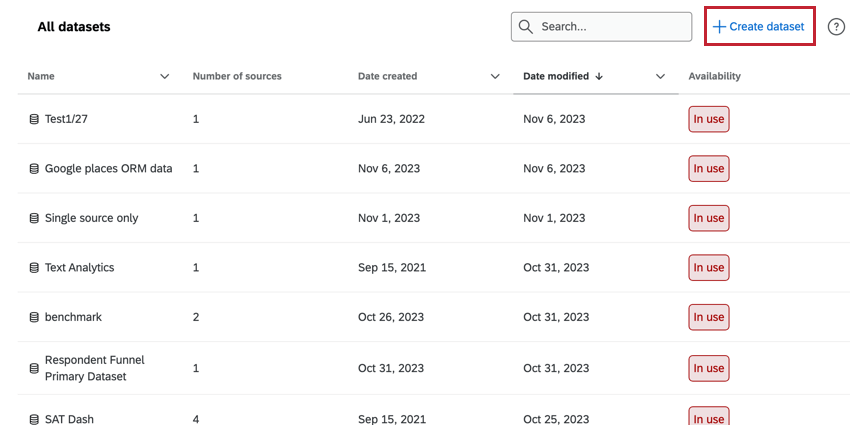
- Select the Data modeler (joins) type.
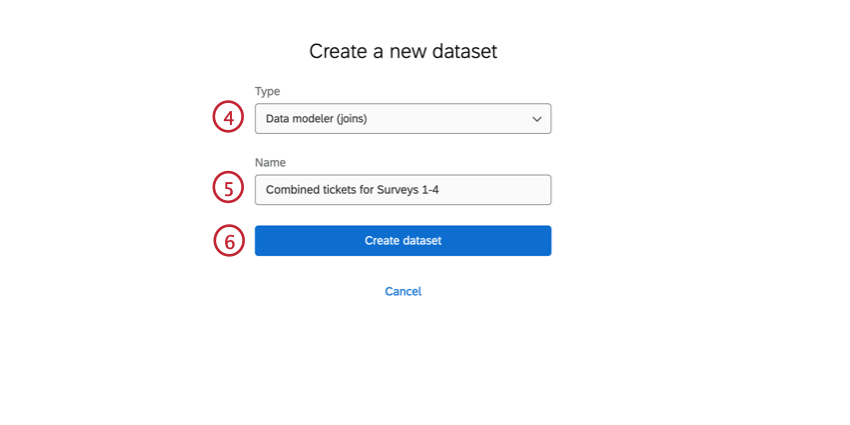
- Name your new dataset.
- Click Create dataset.
- Click Add source and select all of the ticket datasets and corresponding survey datasets from step 1. For more information, see the Creating a Data Model section above.
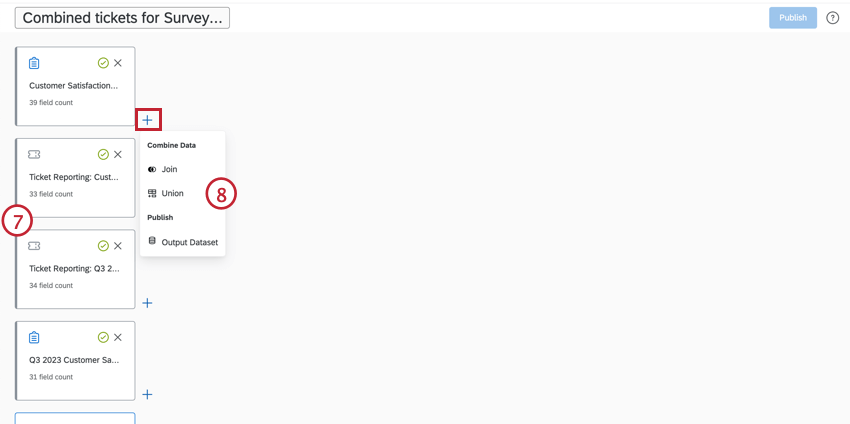
- Click the plus sign ( + ) then click Union.
- If the input is survey data, select the other survey sources in the Union with dropdown. If the input is ticket data, select the other ticket sources.
- Repeat this step to Union the remaining data. All survey datasets should be unioned together, and all ticketing datasets should be unioned together.
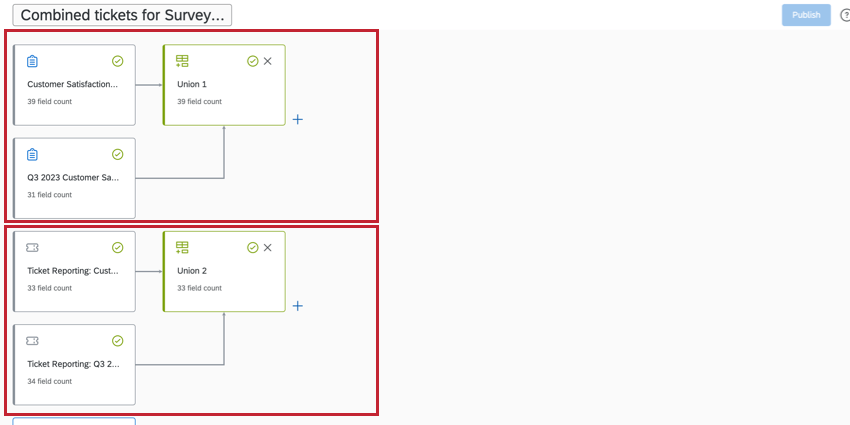
- Click the plus sign ( + ) then select Join.
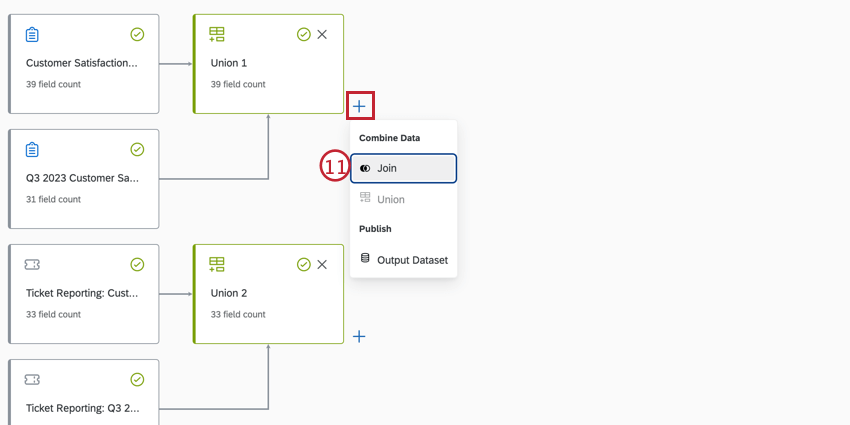
- In the Right Column of the input row, select Union 2.
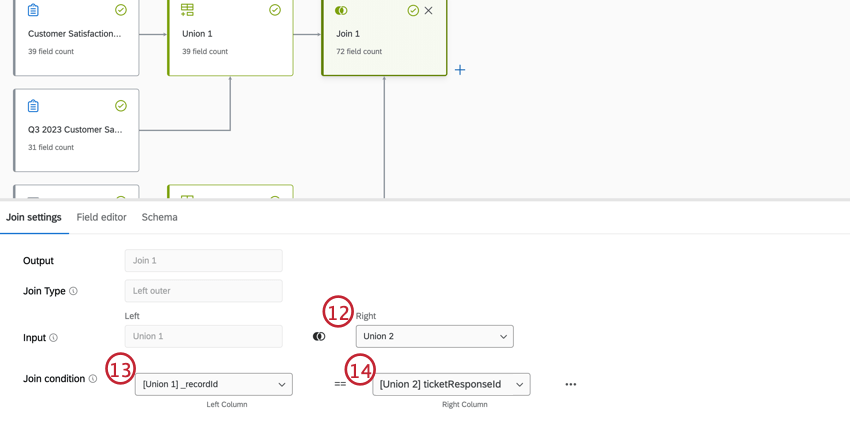
- In the Left Column of the Join condition row, select the recordId.
- In the Right Column of the Join condition row, select the ticketResponseId.
- If there are any additional fields in the original ticket reporting dataset, add those fields via the Field Editor.
- Click the plus sign ( + ) and select Output Dataset.
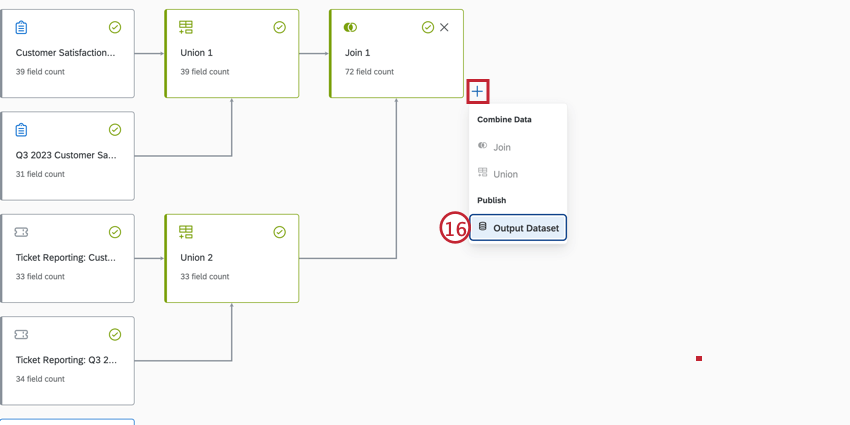
- Publish your data model.
- Follow the steps from the Creating a Dashboard section above to import this dataset into CX Dashboards.
